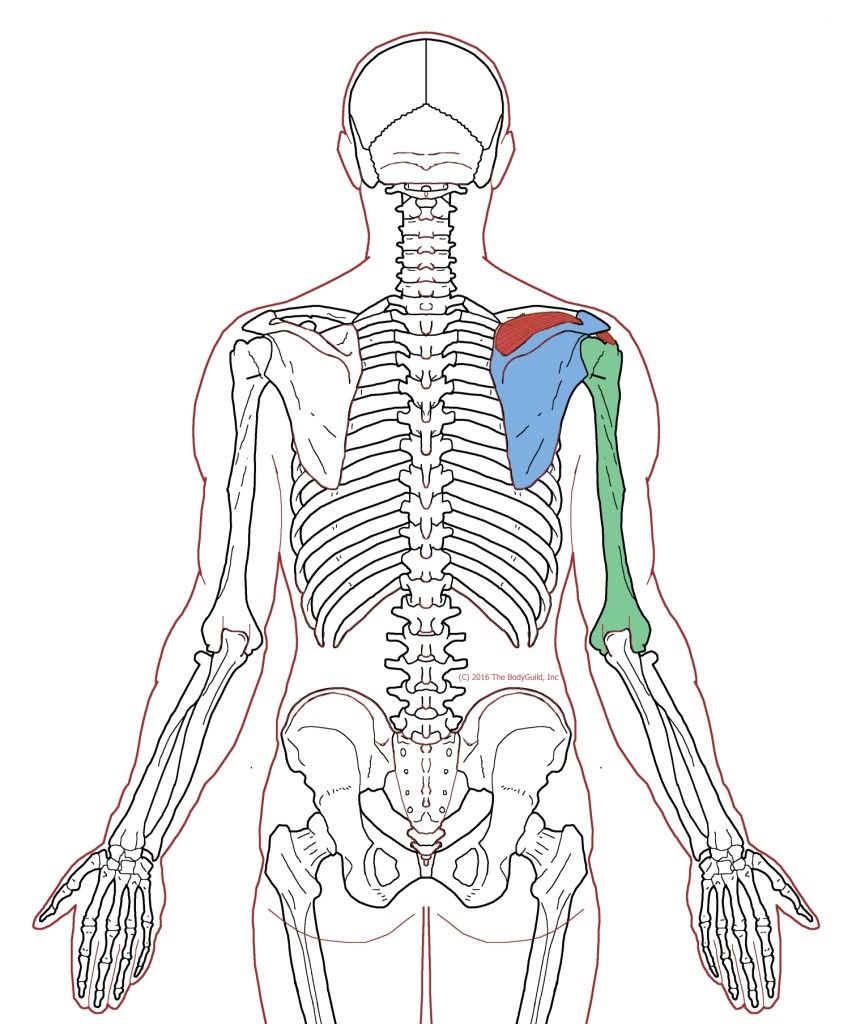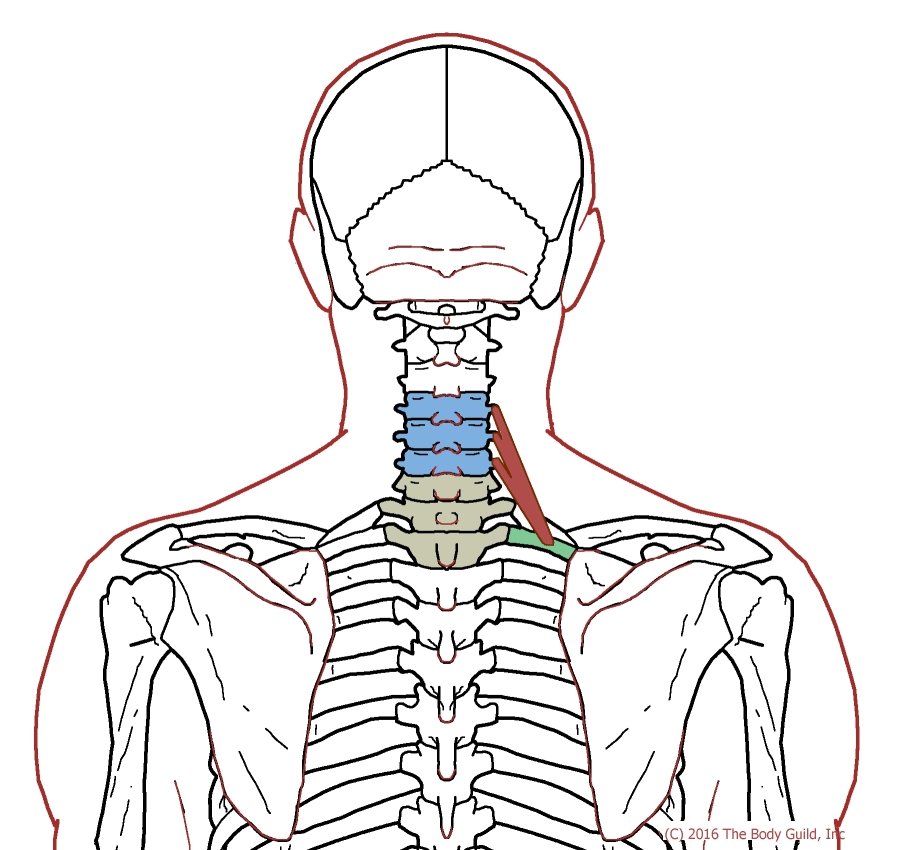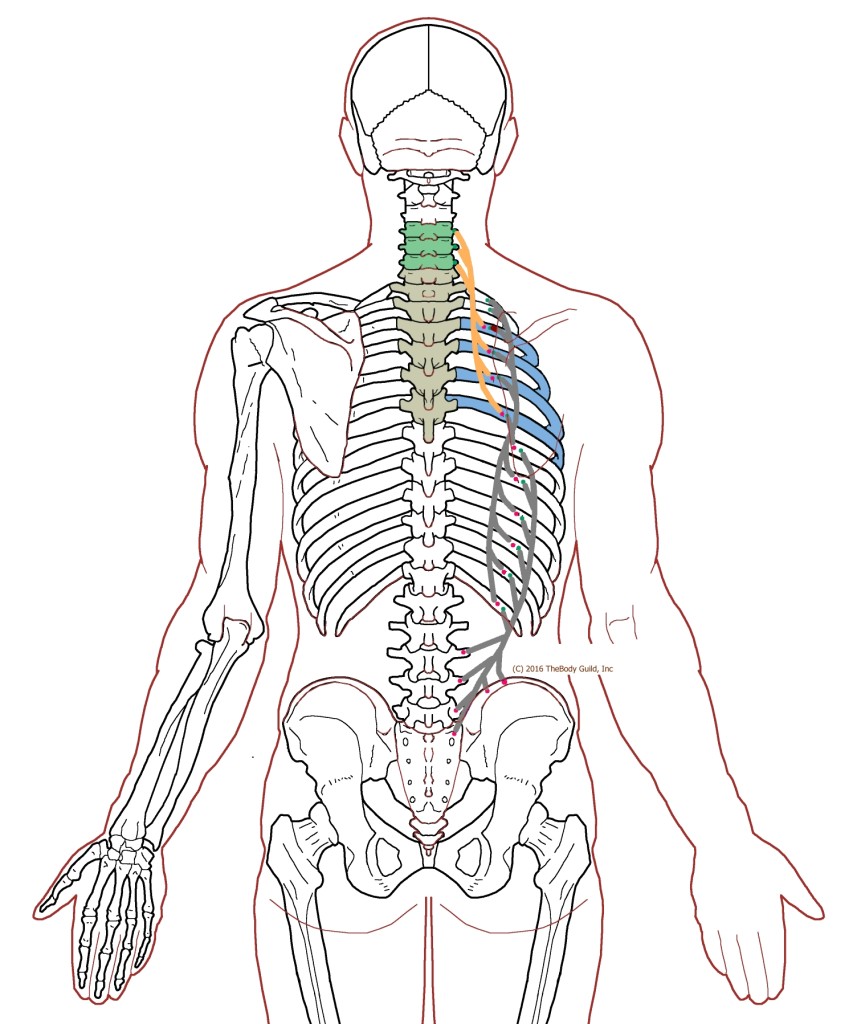Years ago, I started creating my own illustrations. I wanted my manuals to display illustrations that struck a balance between simple and clear. After studying other illustrators’ work, I began to see the advantages and disadvantages of different styles (realistic, line drawings, photos, etc.). However, I also found that even very respected illustrators like Frank Netter of the Color Atlas of Human Anatomy or B.D. Cummings from Myofascial Pain and Dysfunction, The Trigger Point Manual, had errors. Somehow, the problems in those revered texts both discouraged and encouraged me.
If you’d prefer, here’s a video about this project with great examples like quadratus lumborum, psoas, and biceps.
The Basic Idea
Origin, Insertion
As I worked, I realized that trigger points could be activated and de-activated by manipulating nerve endings in joints. More than that, the specific way that the joint was displaced determined which trigger points were activated. Applying this understanding, I made great progress in addressing clients’ issues—even those who had already seen many other practitioners without success.
So, I started illustrating musculoskeletal anatomy in a way that focused on the local joints of those muscles. I put them on a slide show in my treatment room. I would glance up from my work and have epiphanies about the anatomical relationships. Even those I had worked with for years.
Supraspinatus is a simple example. Note that in this illustration,
- The bone where it originates (scapula) is blue.
- The bone where it inserts (humerus) is green.
- The glenohumeral joint is the local joint.
Trapped Bones
The posterior scalene is a little more involved.
- It originates on C4-C6.
- It inserts on the second rib
- C7-T2 are trapped between the bones of origin & insertion
- The intervertebral joints from C4-T2 and the costovertebral joint of T2 are local joints.
Interestingly, the scalene is difficult to release with lasting effect without releasing the displaced rib at C2, which proprioceptively governs the scalene trigger points.
This simple color coding of bones makes it easy for the bodyworker to comprehend how to release trigger points through local joint work. In addition, the implications of what to do and treatment sequence become clearer by understanding which bones and joints lie between the origin and the insertion point. This approach to treatment is easier for the patient and practitioner. As well, muscles relax and contract more completely. And the results are longer-lasting.
In this case, it is interesting to see how many muscles wedge the lower cervicals between their origin and insertion. It made my checklist for faster, longer-lasting treatment more effective.
String Diagrams
Here’s another example: a string diagram of iliocostalis cervicis. This illustration says a lot about the contribution to pain between the shoulder blades and in the base of the neck.
By the way, because of the attachment of ribs on the sternum, other ribs could be considered trapped between the origin and insertion. Unless they are the only joints between origin and insertion (like levator scapula), I don’t highlight those tertiary joints created by the rib cage. I don’t find them relative in joint work for that muscle, and they can make the illustration very confusing.
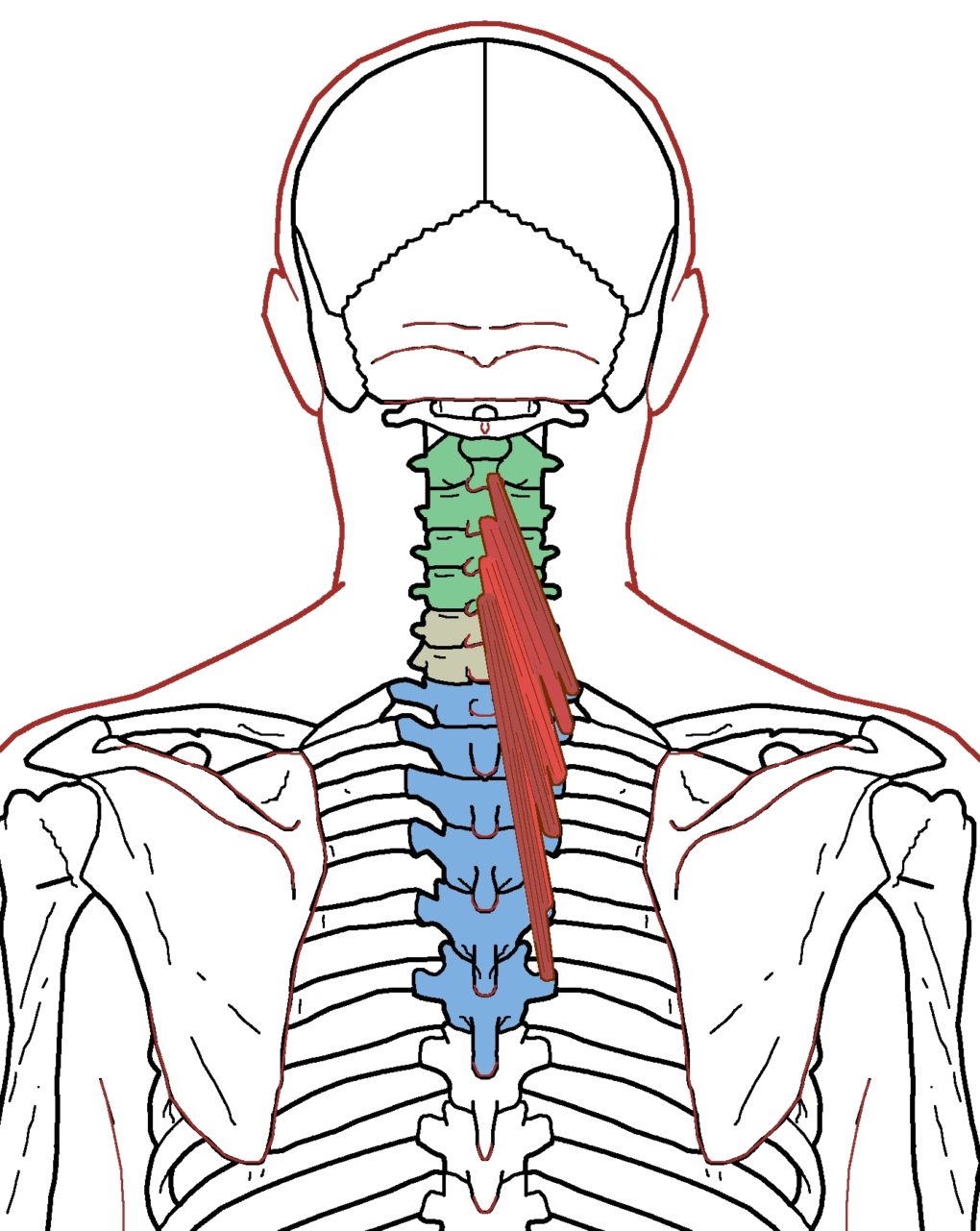
Revealing Common Structural Problems
Looking for what may be compressing the base of the neck? This illustration of semispinalis cervicis is very interesting and not often considered as other muscles come more immediately to mind because of their positioning to the pain pattern.
I’ve chosen a simpler, less organic style and focused less on more subtle fascial attachments. In this way, I can highlight the relationships of muscles and joints.

Relationships in Layers
Translucent illustrations show how one muscle fits and works in relationship to others. This illustration shows how gluteus medius, gluteus minimus, and gluteus maximus all share a vector of pull that pushes the foot posterolateral.
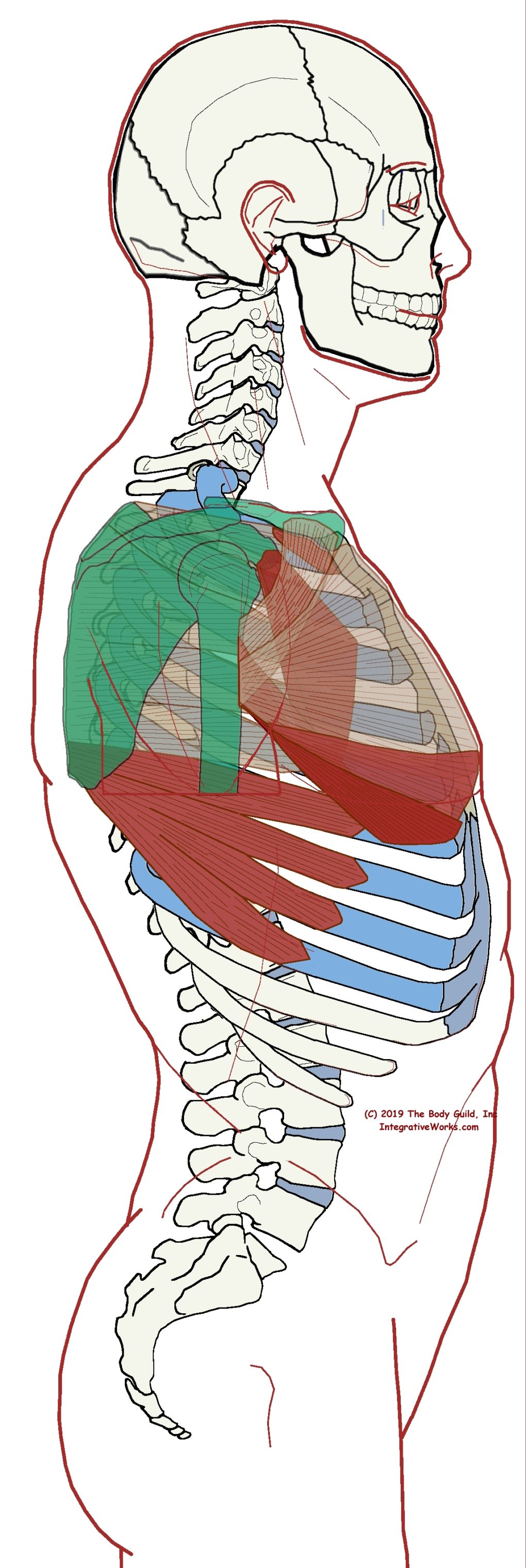
Synergists Working Together
This illustration shows the layers of extrinsic chest muscles that depress the pectoral girdle. This illustration is seldom seen but very helpful for the therapist, who wants to understand what may need to be worked when shoulders are slumped.
I also love this view of the axial skeleton.
I’m always working on new views and perspectives that help bodyworkers. Your comments or suggestions are appreciated.
integrativeworks@gmail.com.
Support Integrative Works to
stay independent
and produce great content.
You can subscribe to our community on Patreon. You will get links to free content and access to exclusive content not seen on this site. In addition, we will be posting anatomy illustrations, treatment notes, and sections from our manuals not found on this site. Thank you so much for being so supportive.
Cranio Cradle Cup
This mug has classic, colorful illustrations of the craniosacral system and vault hold #3. It makes a great gift and conversation piece.
Tony Preston has a practice in Atlanta, Georgia, where he sees clients. He has written materials and instructed classes since the mid-90s. This includes anatomy, trigger points, cranial, and neuromuscular.
Question? Comment? Typo?
integrativeworks@gmail.com
Follow us on Instagram

*This site is undergoing significant changes. We are reformatting and expanding the posts to make them easier to read. The result will also be more accessible and include more patterns with better self-care. Meanwhile, there may be formatting, content presentation, and readability inconsistencies. Until we get older posts updated, please excuse our mess.

